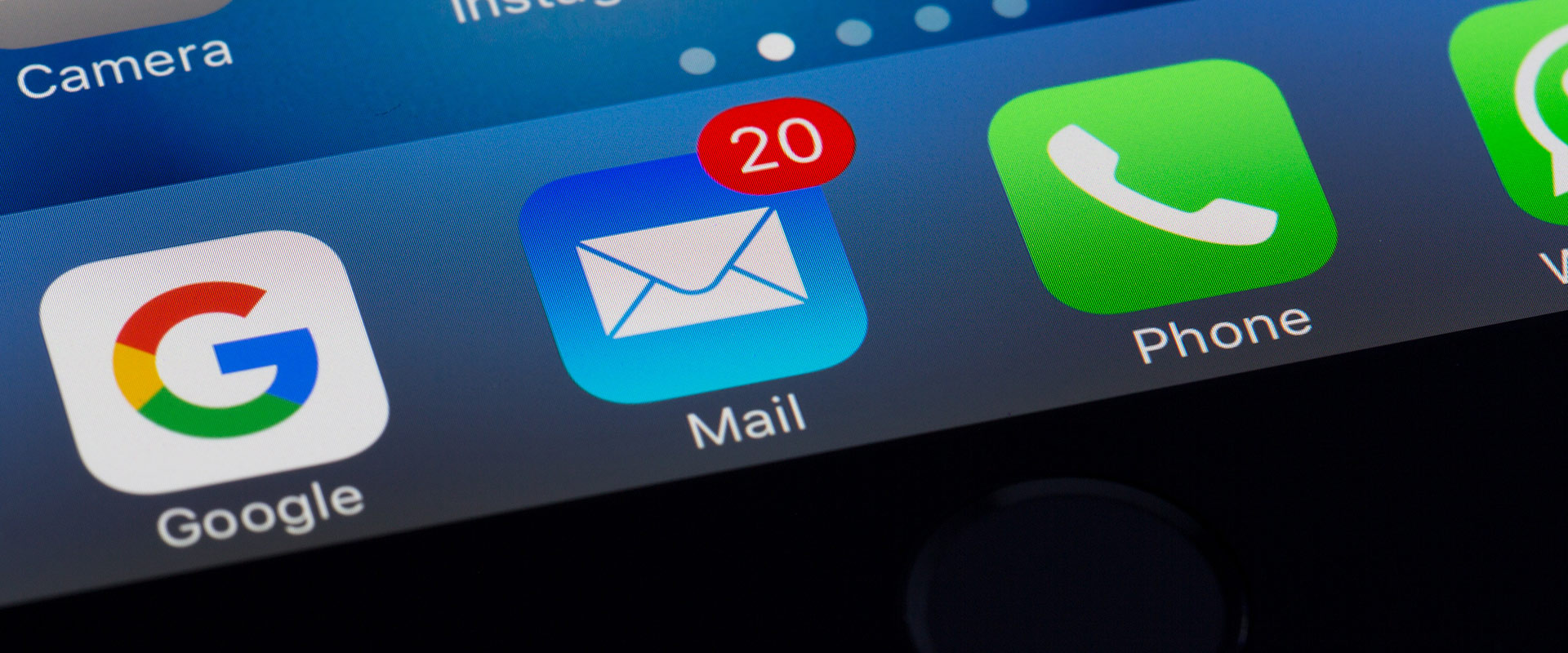How to maintain a healthy email list
Introduction
When it comes to email marketing, it’s easy to get swept up in the excitement of building well-thought out and detailed customer journeys with beautiful templates and hyper-targeted copy. However, what we frequently see being neglected is list management.
It’s important to ensure the data you gather and maintain is as clean and as detailed as possible. The last thing you want is a large, bloated list of profiles that don’t want to hear from you and aren’t effectively segmented. There are so many negative effects to this that you may not even realise. Alternatively, there are multiple positive benefits to a healthy list.
What is a healthy email list?
Before exploring how to maintain a healthy list and why it’s so important, we need to understand what a healthy email list actually is.
A healthy email list has profiles that are high quality, engaged and want to hear from you. Bigger is not always better when it comes to an email list, and you’ll quite often find a small list of highly engaged and quality profiles will outperform a large list of profiles who have had very little contact with your brand. A smaller list is also much easier to maintain!
Before we dive into it, I want to highlight the fact I’m using the singular term ‘list’ and not the plural. It’s considered best practice to have one main list and segment/ tag the profiles within this list. Managing multiple lists can be very difficult and time consuming which is why we don’t recommend it. Sometimes it does make sense, for example if you are separating B2B and B2C lists, in which case it’s fine – but it’s important to make sure any unsubscribers are passed to both lists in case there is any overlap.
With that out the way, let’s get into it. Generally, a healthy email list is defined by:
Subscribers who actively opted in
Privacy is very important, and nobody likes receiving unsolicited emails. It can leave people with a poor opinion of your brand which is something we certainly don’t want. Ensuring the users that are on your email list actively opted in and have confirmed they want to receive emails from you is a vital step towards having a healthy email list.
There are techniques to go one step further with this, such as using a double opt-in. This sends an email to users when they subscribe to your list asking them to confirm their subscription. A double opt-in can be very beneficial as it helps prevent your email list getting clogged with misspelt email addresses or spam emails. However, there’s always the worry that this double opt-in email gets missed by a genuine subscriber and you have just missed out on a potential customer or repeat customer.
Strong engagement rates
This includes open rates, click rates and click-through rates. In the modern, tracking-hating world, open rates are less reliable with the iOS 15 update so we tend to use click rates as the main metric to measure. However, open rates are not completely useless and can still be an effective metric to measure subject lines if you have prepared your account for iOS 15. Not sure if your account is set up correctly for iOS 15? Get in touch.
I have seen many clients stress over the perfect subject line, the right header image and the most engaging call to action in order to get the best engagement rates possible. However, the first place to look is the list’s health. If you’re emailing an email list filled with unengaged profiles and people that don’t want to hear from you – then your email is doomed from the start. Even if it’s perfect.
A steady stream of subscribers
Having a process in which you have a recurring influx of new subscribers is very important. It’s also important to clean out old, unengaged users – these need to be continuously replaced.
This can be via a newsletter pop up on your website, through the use of lead magnets or through regular competitions and opt-in offers. Generally, it can be a great idea to offer value upfront in exchange for an email address. Online users are a lot more savvy about who they give their information to these days.
Gathering subscribers is one thing, but it’s important to do it right. Make sure you are gathering the right information for your list that allows you to segment your subscribers and show them information that is relatable and personable.
For example, if you run a fashion retail brand – ask your subscribers what categories they are interested in hearing more about. Even little things like asking for your subscriber’s birthday can be a great way to build your relationship with them by sending a discount code on their birthday.
Low bounce rates
An email bounce is when an email cannot reach the intended recipient. High bounce rates would indicate that you have many dead emails on your list who are either blocking emails from your domain or the emails simply don’t exist, potentially from the user entering their email incorrectly (this is where double opt-in helps!).
Ideally, anything under 3% is considered a good bounce rate on your emails. It’s important to routinely clean out any email addresses that consistently bounce as a high bounce rate lowers your deliverability score and overall reputation.
Why is a healthy list important?
Segmentation
As I briefly mentioned before, one of the most important aspects of a healthy list is the ability to segment and the effect this has on retention. A study in 2019 by Campaign Monitor showed that, on average, there was a 760% increase in email revenue from campaigns in which segmentation was used. This one statistic shows the power segmentation can have.
Putting the financial benefits to one side, consumers will appreciate you sending them content they actually want to read and find helpful. Email campaigns don’t have to be focused on an exciting new sale or a brand new product that’s launched – they can include content that’s humorous to your audience or just generally helpful.
There are multiple ways to segment your list. Using profile data, engagement data and purchase data you can create multiple cocktails to send hyper-targeted emails to your email list. You should not be, or at least very rarely be, sending emails to your whole email list.
Profile data includes things such as:
- When the user subscribed.
- The user’s location.
- The user’s birthday.
- The user’s interests.
Engagement data includes elements such as:
- When they last opened an email.
- When they last clicked an email.
- When they were last active on your site.
- Any specific products, categories or service pages they viewed on your site.
Finally, purchase data can be broken down into:
- Historic lifetime value.
- Product/category purchased.
- Cancelled or refunded order.
- Subscription level (SAAS).
Our helpful diagram below helps list these different aspects out and gives some helpful segment examples.

Deliverability/ reputation
Keeping a healthy list will keep your email sender reputation at a high level. This prevents your emails being sucked into the dreaded junk folder or even blocked altogether by certain email service providers.
Email can get quite complicated when discussing deliverability and reputation as DNS, dedicated sending domains and jargon discussing your email infrastructure can muddy the waters. When in doubt, play it safe. A black-listed and spam-ridden email domain is almost impossible to recover from but as long as you take the necessary precautions and only email profiles you know want to hear from you, then you’ll be fine.
A great technique to start off on the right foot is domain warming. This helps ensure you are labelled as a reputable sender which helps avoid the dreaded junk folder. To learn more about how to do this and what exactly it is, Klaviyo has a helpful guide which you can read here. For your specific email software provider, they will likely have their own guide on how to do this with their software.
Costs
Depending on your email software, keeping a healthy list can help keep your monthly costs down. It’s common for email software to charge based on the number of contacts which means the last thing you want is to be charged for a bunch of emails that you get absolutely no value from in return.
If we take over an email account with a large number of profiles, one of the first things we’ll do is ensure the list has been cleaned from any unengaged profiles. For example, when we were asked to audit a Klaviyo account last year, we found that around 40% of profiles hadn’t opened an email in the last 365 days despite receiving at least 20 emails. By cleaning these emails, we cut the monthly email costs for our client by almost 50% which, for a small business, was huge. This helped them invest further into marketing to grow the business.
How to keep your list healthy
There’s no doubt keeping a healthy list can be quite time-consuming. Especially when a clean list isn’t on your KPI list. However, there are techniques out there that can automate a lot of the clean-up process.
We recommend using 2 main email automations (or flows) to help keep your email list engaged and healthy: the re-engagement and sunset flows.
The re-engagement flow
The re-engagement flow, sometimes called the win back flow, is an email automation sent to email profiles who have not engaged with your emails in a while and, believe it or not, the main goal of the flow is to encourage these users to re-engage with your emails again.
Depending on how frequently you send email campaigns, a profile is often considered unengaged after 30 to 90 days of inactivity. Inactivity can be determined by a user not opening or clicking an email within a certain time.
As a rough guide, I recommend using the table below on when to consider a profile unengaged:
| Email Frequency | Inactivity Time (Days) |
| Daily | 30 |
| Weekly | 60 |
| Monthly | 120 |
However, it’s important to understand your business when deciding this. If you are a high-ticket ecommerce store in which your average repeat purchase is 6 months after the first – your unengaged definition is going to be a lot more forgiving.
With these profiles being considered unengaged, it’s important to create a segment for them. This gives the functionality of initiating an email flow but also allows you to exclude these profiles from any campaigns that you send which ensures you are emailing profiles that are considered engaged.
The re-engagement flow tends to include 1 to 3 emails which allows the possibility of attempting multiple angles to encourage the user to re-engage. The flow provides a great chance to remind your user why they subscribed in the first place and potentially provide a discount code or special offer to entice them back.

An example win back flow suggested by Klaviyo.
The sunset flow
When the re-engagement flow fails, the sunset flow comes in to bid your unengaged users adieu. This is generally just a 1-email automation letting users know that they will no longer receive emails. Then, it’s the flow’s duty to either mark that profile to be suppressed/ deleted or to actually do the deed, depending on your email software’s capabilities or internal process.
Similarly with the re-engagement flow, it depends on how frequently you send email campaigns to decide when you should send this email to unengaged users. However, a good rule of thumb is to start at 90 days if you email daily – if you email less frequently, we would suggest a larger number such as 180 days.

An example sunset flow from Klaviyo.
Summary
It’s clear that a healthy email list has multiple benefits including reduced costs, better engagement rates and ultimately higher revenue. Although it can get complicated with multiple different aspects to it from DNS settings to automations, it’s important to take it back to basics:
- Ensure you are collecting relevant and high-quality subscribers.
- Be sure you are emailing people that have proven they want to hear from you.
- Send relevant and interesting emails to an engaged
- Have a list cleaning process in place.
If you follow the above steps, you are on the right track to a healthy email list and, when in doubt, split-test.
Not sure where to even start? Please get in touch with us and we’ll be happy to help.
Related posts

21.03.24
EVENT: How to overcome e-commerce growing pains on the journey to £5m

07.03.24
Consent Mode and user privacy best practice

07.03.24
GA4 Essential Guide

31.03.22
Getting to grips with ecommerce: Part 2

24.03.22
Getting to grips with ecommerce: Part 1

03.02.22

